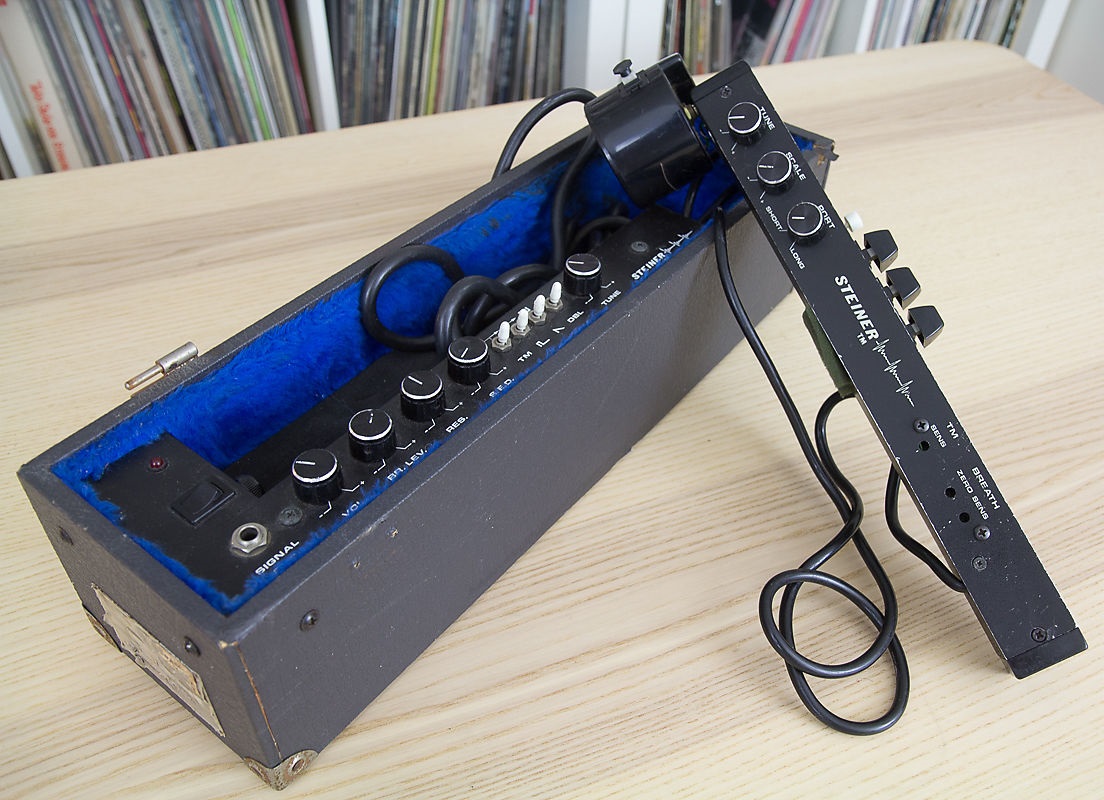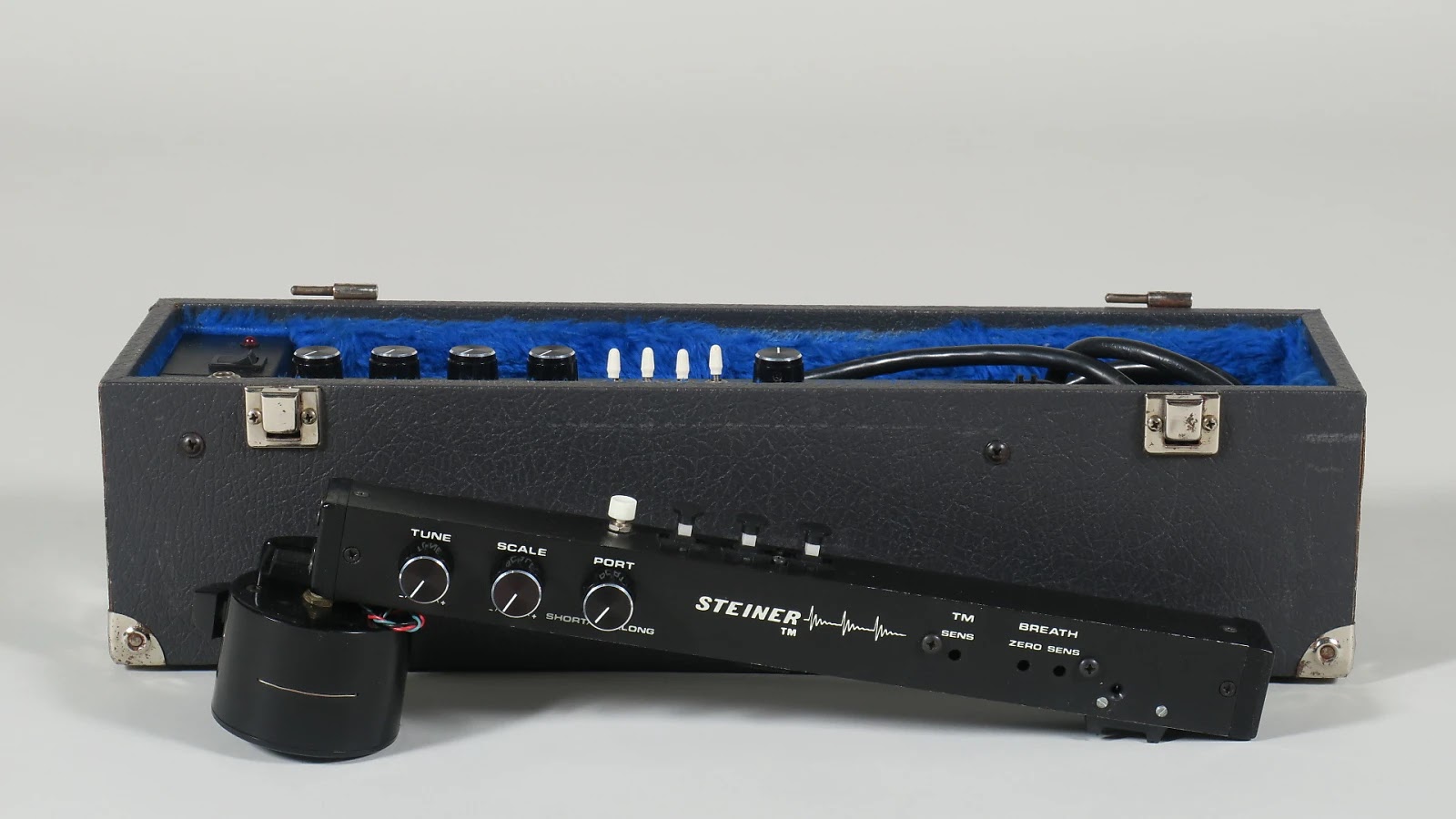Electronic Valve Instrument
Electronic Instruments
America
Between 1901 and present
Video
The Electronic Valve Instrument (EVI) is a wind synthesizer that emulates the playing technique of brass instruments while utilizing electronic sound generation. Designed primarily for trumpet and other brass players, the EVI allows musicians to control a synthesizer through breath and valve-like fingerings, making it a unique blend of traditional and modern musical technology. Unlike conventional brass instruments, which produce sound through vibration and resonance in tubing, the EVI generates sound electronically, offering a broad range of tones and timbres. It provides a bridge between acoustic wind instruments and electronic music, making it an essential tool for musicians seeking expressiveness in a digital format.
Type of Instrument
The EVI falls under the category of electronic wind instruments (EWIs), which are part of the broader family of electronic musical instruments. Unlike acoustic wind instruments that rely on air column vibrations, EWIs convert breath and finger inputs into digital signals, which are then interpreted by synthesizers. The EVI is specifically designed for brass players, featuring a set of valves similar to those found on trumpets, rather than the key-based system found on other wind synthesizers like the Akai EWI. This specialization makes it unique among electronic instruments.
History of the Electronic Valve Instrument
Continent of Origin
The EVI was developed in North America, specifically in the United States. It was conceived as a response to the growing integration of electronic technology into music during the late 20th century.
The EVI was first introduced in the 1970s, a period marked by significant advancements in synthesizer technology. The pioneering work of Nyle Steiner, an American musician and instrument designer, led to the creation of this innovative instrument. As electronic music became more prominent, musicians sought ways to incorporate wind and brass instruments into the digital realm, resulting in the development of the EVI.
Construction of the EVI
The EVI is composed of several key components that differentiate it from traditional brass instruments.
Valves and Fingerings: The instrument features a set of valves that mimic the layout and feel of a trumpet or other brass instrument. These valves do not control airflow but rather send electronic signals corresponding to different notes.
Breath Sensor: Instead of relying on a vibrating air column, the EVI uses a breath sensor to detect the musician’s airflow and translate it into electronic signals.
Electronic Circuitry: The internal electronics process input signals and send them to an external synthesizer, where the actual sound is generated.
MIDI and Synthesizer Integration: Modern EVIs are equipped with MIDI (Musical Instrument Digital Interface) capabilities, allowing them to interface with a wide variety of synthesizers and digital audio workstations.
Ergonomic Design: The instrument is designed to be held similarly to a brass instrument, providing a comfortable transition for musicians accustomed to traditional wind instruments.
Types of Electronic Valve Instruments
Standalone EVI Units
These instruments come with built-in sound generators, allowing musicians to play without additional external equipment. They often feature onboard synthesis and sound modification capabilities.
MIDI-Dependent EVIs
These require an external MIDI synthesizer or sound module to produce sound. They are favored by musicians who prefer customized tones and extended sound libraries.
Features of the EVI
- Expressive Breath Control: The breath sensor allows for dynamic control over volume and articulation, replicating the nuances of acoustic brass instruments.
- Valved Fingering System: Trumpet players can transition easily to the EVI due to its familiar fingering layout.
- Wide Sound Palette: Since the EVI generates sound electronically, it can produce a vast array of tones, from realistic brass sounds to futuristic synthesized timbres.
- Portability: Lighter and more compact than many brass instruments, the EVI is easy to transport.
- Integration with Modern Technology: Most EVIs are MIDI-compatible, allowing them to work seamlessly with digital audio workstations (DAWs) and synthesizers.
Sound Production
Unlike acoustic brass instruments, which rely on airflow and lip vibration, the EVI converts breath pressure and valve manipulation into electrical signals. These signals are sent to a synthesizer, where they are converted into sound. The musician can shape the sound through breath intensity, valve combinations, and additional controls such as pitch bend and modulation wheels. The synthesizer then produces the final sound, which can be routed to speakers or recording systems.
Playing Methods
The EVI is played similarly to a trumpet, with musicians using their fingers to press the electronic valves while controlling dynamics through breath. However, unlike acoustic instruments, the EVI allows for additional digital manipulation, such as:
Changing Sound Patches: Players can switch between different synthesized sounds at the push of a button.
Octave Shifting: Many EVIs feature octave rollers or switches, allowing musicians to play across a broader pitch range than traditional brass instruments.
Effects Processing: Since the instrument is electronic, effects like reverb, delay, and modulation can be easily applied.
Roles in Music and Significance
Role in Contemporary Music
The EVI plays a significant role in modern music genres, including jazz, electronic music, film scoring, and experimental music. Its ability to mimic traditional brass sounds while offering expanded sonic possibilities makes it a versatile tool for composers and performers alike.
Significance in Music Evolution
The EVI represents an important step in the evolution of wind instruments, bridging the gap between acoustic tradition and electronic innovation. It allows brass players to explore digital soundscapes while maintaining expressive control over their performances. Additionally, it has expanded the accessibility of wind synthesis, enabling musicians to produce intricate compositions that would be challenging with acoustic instruments alone.
The Electronic Valve Instrument (EVI) is a groundbreaking instrument that merges the expressive qualities of brass playing with the limitless potential of electronic synthesis. Designed primarily for brass musicians, it offers a familiar playing experience while introducing new possibilities through digital sound manipulation. Its historical significance, diverse applications, and advanced features make it an essential instrument in both traditional and modern musical contexts. As technology continues to evolve, the EVI remains a crucial tool for musicians looking to explore new sonic frontiers.
FAQ
What are some key features of the Electronic Valve Instrument?
The Electronic Valve Instrument features breath control sensitivity, pitch bend capabilities, vibrato effects, MIDI compatibility for connecting external devices, and customizable sound options through various synthesizers.
What types of Electronic Valve Instruments are available?
There are several types of Electronic Valve Instruments including the Standard EVI, MIDI EVI which includes MIDI capabilities, and Wireless EVI allowing for wireless connectivity during performances.
How has the Electronic Valve Instrument influenced modern music?
The Electronic Valve Instrument has influenced modern music by providing musicians with an expressive tool that blends traditional brass techniques with electronic capabilities across genres like jazz and electronic music.
 Links
Links
References
 Similar
Similar
Instruments
Other Instrument
Categories



















